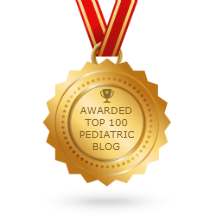
Podcast: Play in new window | Download
This week I sit down with Dr. Stan Gabryszewski to discuss allergies from multiple angles.
Dr. Gabryszewski graduated from Princeton University with a degree in Molecular Biology before attending Columbia University for his MD as well as a PhD degree in Cellular, Molecular and Biomedical Studies. He then completed his pediatric residency and is a senior allergy immunology fellow at the Children’s Hospital of Philadelphia where he now teaches and performs research in the lab of Dr. David Hall. His research is focused on better understanding the epidemiologic and immunologic features among pediatric allergic disorders, in particular the food allergies IgE-mediated food allergy and eosinophilic esophagitis.
In this conversation, Stan and I sit down to discuss his recent paper in Pediatrics entitled, Patterns in the Development of Pediatric Allergy. This article is a much needed look at the true prevalence of allergy and allergic diseases in children. We discuss the statistics as well as the thoughts behind the why this is occurring. The upstream reasons are very important, hard to tease out but worthy of discussion.
Please enjoy my conversation with Stan Gabryszewski,
Dr. M
His recent paper in pediatrics.










